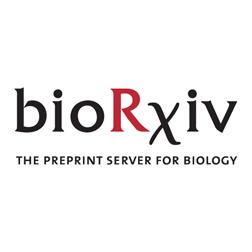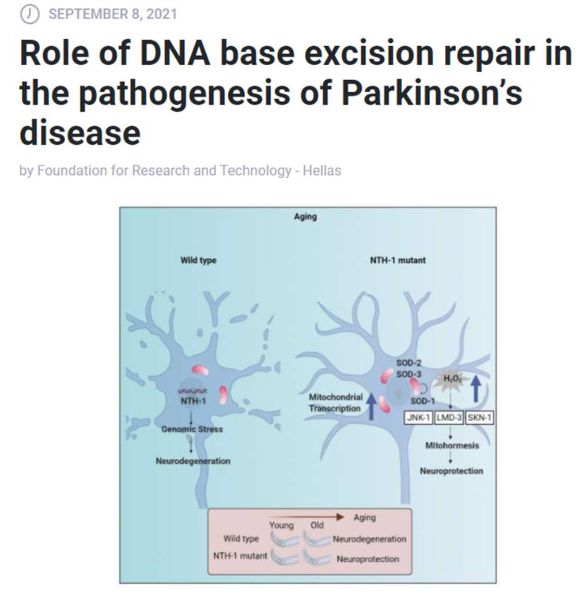Daniel Bojar
Assistant Professor (Associate Senior Lecturer) at University of Gothenburg
Feed post
[

Daniel Bojar • 1st Assistant Professor (Associate Senior Lecturer) at University of Gothenburg 1w •
](https://www.linkedin.com/in/daniel-bojar-418647b2?miniProfileUrn=urn%3Ali%3Afs_miniProfile%3AACoAABfxnZQBSj8ZvLz2r9htvrFVcILLPwelfzo)
Proud to present our most recent work, led by Luc Thomès in the group. Here, we investigated the role of fucose, a monosaccharide that is unusually widely used in glycans/complex carbohydrates across most forms of life. Using a combination of bioinformatics, machine learning, and our curated glycan datasets, we find a plethora of different ways that fucose can be utilized by organisms - in domains as diverse as immune evasion by molecular mimicry, habitat adaptation, symbiosis, cancer, etc.
Be sure to check out the full paper to see all the cool facets of fucose!
#glycobiology #machinelearning #computationalbiology
[
The role of fucose-containing glycan motifs across taxonomic kingdoms
biorxiv.org • 2 min read
](https://www.biorxiv.org/content/10.1101/2021.08.08.455599v1)
Reactions

[
Alex K. Chen You raising a new VC + training longevity apprentices
](https://www.linkedin.com/in/alexkchen/)
9h
Why are terminal monosaccharides the most interesting? Is it just easier for some enzymes to universally recognize terminal monosaccharides?
1 Reply 1 Comment on Alex K. Chen’s comment
Lead the conversation by turning your comment into a post.
[
Daniel Bojar Author Assistant Professor (Associate Senior Lecturer) at University of Gothenburg
](https://www.linkedin.com/in/daniel-bojar-418647b2/)
1h
Good question! Terminal monosaccharides are indeed more accessible to enzymes as well as glycan-binding proteins (for instance from the innate immune system). They are typically also a lot more variable than the more conserved core structures, making them more interesting for functional analyses & differences between taxonomic groups!
the IGF1 receptor!!! I’ve always wondered if IGF1R or IGF1 hypomorphs are more impt for aging
also IGF1R activates 3 multiple pathways (https://www.ahajournals.org/doi/10.1161/01.atv.0000105902.89459.09 - phosphatidyl inositol 3-kinase (PI3K), Akt, and mitogen-activated protein kinase (MAPK).) - which of the pathways activated is most pro-aging? Ras/Raf or Rac?
WOW, 3 pathways WOW
FINALLY THE DEFINITIVE PAPER ON THYROID HORMONES AND AGING - https://onlinelibrary.wiley.com/doi/full/10.1111/acel.13260
T3 is known to increase the levels of 8-oxo-2’-deoxyguanosine (8-OH-dG), a biomarker of oxidative DNA damage. Moreover, a strong cofocalization of 8-OH-dG with TP53BP1 has supported the presence of oxidized DNA at double-strand break sites. Supporting the role of TH-induced oxidative stress leading to DNA damage, antioxidant treatment using N-acetyl-l-cysteine in TH-treated samples blunted formation of 8-OH-dG/TP53BP1 foci (Zambrano
…and the canonical growth hormone paper… The Growth Hormone Receptor: Mechanism of Receptor Activation, Cell Signaling, and Physiological Aspects
god it’s so weird how most of these were not out more than several years ago
Doris Loh
![]() Favorites · S e p t e m b e r 8 a t 1 1 : 4 5 A M ·
Favorites · S e p t e m b e r 8 a t 1 1 : 4 5 A M ·
Is phase separation important for neurodegenerative diseases? 10000000%
A peer-reviewed study published on Sept 7 revealed that incomplete DNA base excision repair can cause genomic stress during aging, resulting in neurodegenerative diseases such as Parkinson’s disease (PD) [1].
During aging, the ability to lower oxidative stress in neurons is reduced. As a result, heavy ROS produced naturally by neurons end up damaging DNA. Base excision repair (BER) is the major DNA Damage Response (DDR) pathway that can repair these oxidative damages to protect neurons. Using nematodes in an experimental study on PD, the authors of this new report found that increased mitochondrial and nuclear DNA repair intermediates as a result of incomplete BER activity resulted in the familiar neuronal cell deaths seen in PD [1].
What regulates the BER pathway? If you answered “phase separation”, you get an A++ this morning.
Cells use liquid-liquid phase separation (LLPS) to rapidly concentrate biochemical reactions while excluding noninteracting components. DNA damage response like BER is no exception. As part of the BER DDR pathway, Apurinic/apyrimidinic endonuclease 1 (APE1) is a multifunctional protein that undergoes LLPS [2], and this protein is heavily involved in the BER pathway, acting as a reductive activator for many transcription factors that can maintain cellular redox homeostasis [3].
The ability of APE1 to recruit, bind, and interact with different BER factors is modulated through LLPS processes [2]. Aberrant LLPS will lead to reduced BER activity and capacity for DNA damage response, which could result in not only neurodegenerative diseases but also many types of cancers [4].
Have you had your AA and MEL today?*
- Disclaimer: These statements have not been evaluated by the Food and Drug Administration. Ascorbic acid, melatonin and any other product mentioned is not intended to diagnose, treat, cure or prevent any disease.
References:
[1] SenGupta, T.; Palikaras, K.; Esbensen, Y. Q.; Konstantinidis, G.; Galindo, F. J. N.; Achanta, K.; Kassahun, H.; Stavgiannoudaki, I.; Bohr, V. A.; Akbari, M.; Gaare, J.; Tzoulis, C.; Tavernarakis, N.; Nilsen, H. Base Excision Repair Causes Age-Dependent Accumulation of Single-Stranded DNA Breaks That Contribute to Parkinson Disease Pathology. Cell Rep. 2021, 36 (10). https://doi.org/10.1016/j.celrep.2021.109668.
[2] Tosolini, D.; Antoniali, G.; Dalla, E.; Tell, G. Role of Phase Partitioning in Coordinating DNA Damage Response: Focus on the Apurinic Apyrimidinic Endonuclease 1 Interactome. Biomol. Concepts 2020, 11 (1), 209–220. https://doi.org/10.1515/bmc-2020-0019.
[3] Thakur, S.; Sarkar, B.; Cholia, R. P.; Gautam, N.; Dhiman, M.; Mantha, A. K. APE1/Ref-1 as an Emerging Therapeutic Target for Various Human Diseases: Phytochemical Modulation of Its Functions. Exp. Mol. Med. 2014, 46, e106. https://doi.org/10.1038/emm.2014.42.
[4] Desai A, Yan Y, Gerson SL. Advances in therapeutic targeting of the DNA damage response in cancer. DNA Repair (Amst). 2018;66-67:24-29. doi:10.1016/j.dnarep.2018.04.004
’ xlink:href=’%23b’/%3e%3cuse fill=‘black’ filter=‘url(%23c)’ xlink:href=’%23b’/%3e%3cpath fill=‘white’ d=‘M12.162 7.338c.176.123.338.245.338.674 0 .43-.229.604-.474.725a.73.73 0 01.089.546c-.077.344-.392.611-.672.69.121.194.159.385.015.62-.185.295-.346.407-1.058.407H7.5c-.988 0-1.5-.546-1.5-1V7.665c0-1.23 1.467-2.275 1.467-3.13L7.361 3.47c-.005-.065.008-.224.058-.27.08-.079.301-.2.635-.2.218 0 .363.041.534.123.581.277.732.978.732 1.542 0 .271-.414 1.083-.47 1.364 0 0 .867-.192 1.879-.199 1.061-.006 1.749.19 1.749.842 0 .261-.219.523-.316.666zM3.6 7h.8a.6.6 0 01.6.6v3.8a.6.6 0 01-.6.6h-.8a.6.6 0 01-.6-.6V7.6a.6.6 0 01.6-.6z’/%3e%3c/g%3e%3c/svg%3e)
’ xlink:href=’%23b’/%3e%3cuse fill=‘black’ filter=‘url(%23c)’ xlink:href=’%23b’/%3e%3cpath fill=‘white’ d=‘M10.473 4C8.275 4 8 5.824 8 5.824S7.726 4 5.528 4c-2.114 0-2.73 2.222-2.472 3.41C3.736 10.55 8 12.75 8 12.75s4.265-2.2 4.945-5.34c.257-1.188-.36-3.41-2.472-3.41’/%3e%3c/g%3e%3c/svg%3e)
238You, Doris Loh and 236 others
21 Comments
14 Shares
Like
Comment
Share
I REALLY LIKE THIS Role of phase partitioning in coordinating DNA damage response: focus on the Apurinic Apyrimidinic Endonuclease 1 interactome
technical/DSP-ish Estimation of Instantaneous Complex Dynamics through Lyapunov Exponents: A Study on Heartbeat Dynamics











